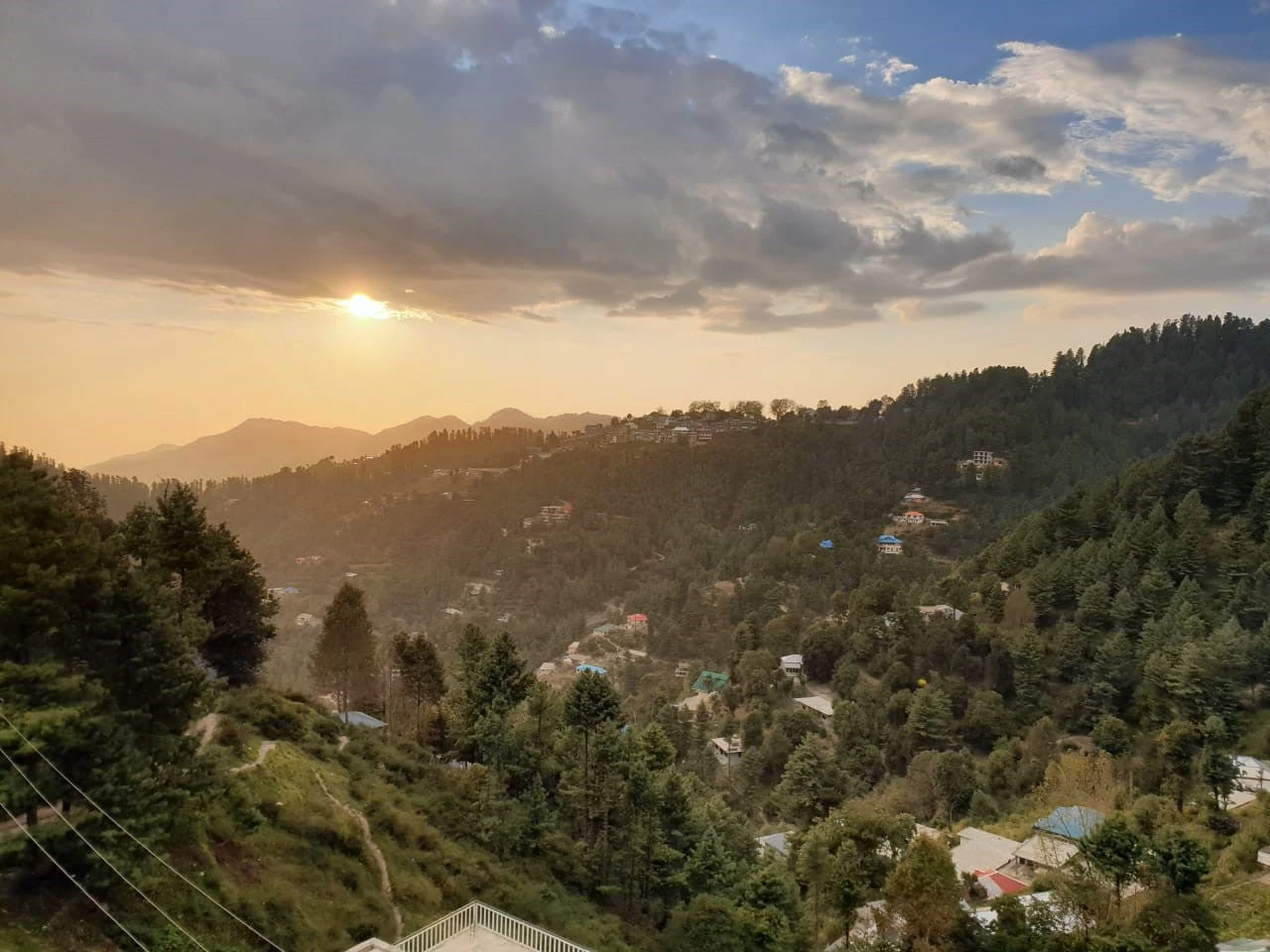 View of Nathia Gali town in Khyber Pakhtunkhwa Province.
View of Nathia Gali town in Khyber Pakhtunkhwa Province.
Last winter, my family and I decided to visit Nathia Gali, a picturesque town nestled amongst the lush green mountains in the Khyber Pakhtunkhwa province. As we drove towards our destination, we came across several women collecting firewood by the roadside. Speaking with one of the young ladies, she told me that the women of the family collect this firewood for daily use .
What is striking is the extent of families’ dependency in a relatively advanced region, still having to rely on basic methods of energy generation. Approximately 68% of Pakistan’s population depends on firewood as the main source of energy in households .
With almost three-quarters of the population using Pakistan’s forest resources daily, the impact is dire.
Every year, Pakistan loses almost 27,000 hectares of natural forest area
Based on this, Pakistan is in a state of ‘Green Emergency’.
This state of emergency has negatively impacted the rural population that relies on Pakistan’s forests for their livelihoods.
Along with changes in the ecosystem, this dependency has made them extremely vulnerable to the further degradation of forests – a large number of households and workers in this region could lose their vocation, skillset and habitat.
With a declining supply of raw materials from Pakistan’s own forest ecosystems, forest-based industries and their employees are at risk from the Green Emergency.
Industries such as tourism and agriculture have also been affected. Though these sectors are not directly impacted by deforestation, their operations in part rely on the benefits of Pakistan’s forestry.
Although afforestation sounds like the obvious solution, there are several areas that need immediate attention
First, regulations for Pakistan’s natural resources must be reformed to support sustainable management. Existing regulations have so far hindered governmental sectors tasked with forest and parkland management.
Secondly, for a solid basis for scientific management of forest resources, monitoring and reporting must be upgraded and expanded with technical infrastructure. With a more comprehensive, efficient data system, the federal and provincial levels can work together to support the effective development and implementation of forest policies.
Lastly, while the government’s afforestation initiatives have made important progress, public sector agencies more widely must improve the accountability and transparency of their operations.
Such efforts will encourage domestic and international partners and restore their confidence in the forest sector. Investment in the forest sector is critical to restore and manage Pakistan’s forest ecosystem.
Looking ahead, I hope that my country can transform the Green Emergency into a Green Revolution. I hope to return to a greener Nathia Gali and hope to see those families able to use clean energy instead of firewood .
For more information, see the Pakistan Forest Note: Forests for Green Pakistan report here.


Join the Conversation